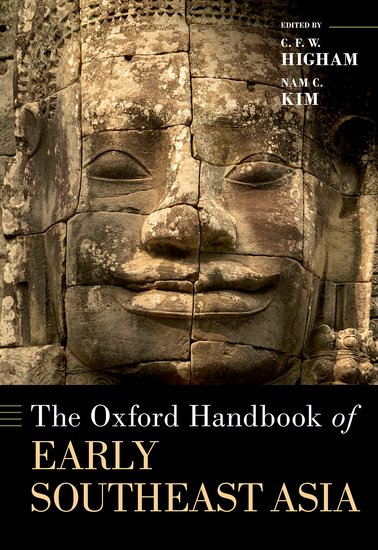Excerpt from our chapter in the Oxford Handbook of Early Southeast Asia
PHAM, C. M. H., WALKER VADILLO, V., and CRAIG, J.L.O. (2022) Perspectives on Maritime Archaeology in Southeast Asia. In Higham, C. and Kim, N. (eds) The Oxford Handbook of Early Southeast Asian Archaeology. Oxford: Oxford University Press. Available at: https://global.oup.com/academic/product/the-oxford-handbook-of-early-southeast-asia-9780199355358?cc=fi&lang=en&#
Maritime archaeology in Southeast Asia is a vibrant area of research that entails a hugely diverse dataset. Historical and anthropological records are combined with archaeological material in attempts to interpret the tangible and intangible heritage connected to the use of the aquatic environment. Seas, rivers and lakes create fluid environments and provide space for socio-economic activities. The role of maritime archaeologists is to interpret that connection and exchange by looking at the issue from a water perspective, taking into account the intricate entanglement between humans, objects, and the watery environment that make up maritime communities. From this perspective, maritime archaeology has also developed specific theoretical frameworks to interpret archaeological data. This chapter provides an overview of the discipline in Southeast Asia, of the current projects and trends, and explores different ways of enquiry that can be used to apprehend human-environment interactions in sea, rivers, and lakes.
Keywords
Maritime, water, archaeology, maritime cultural landscape, underwater cultural heritage, shipwreck, boat building, seafaring
Introduction
Maritime archaeology is an emerging discipline in Southeast Asian archaeology. The etymology of the word refers to the sea, yet the discipline has developed its own definition to include also inland waters. The emphasis of the discipline is placed on cultures whose cognitive approach to the environment differed from inland (agricultural) cultures because their socio-economic activities are shaped by water. Although these communities also partook in land activities and did not exclusively live from the aquatic environment, they present a specific set of skills, tools, and knowledge that sets them apart from land-based communities (Westerdahl, 2011: 744). Archaeological sites connected to maritime activities are quite varied; shipwrecks and boat remains on land are the most commonly associated with maritime archaeology, but sites such as coastal settlements, lake and river dwellings, harbours, fish weirs, and shipyards are examples of the diverse nature of maritime sites. Maritime archaeology can thus be conducted in shallow waters or in deep waters, along the coast, on the foreshore, and in lakes or in rivers.
Maritime archaeology as it stands today is broadly considered to be concerned with “the study of material remains relating to human activities on the seas, interconnected waterways, adjacent locales and associated communities” (Adams, 2006: 1). The simplicity of this sentence hides an arduous path that has led maritime archaeologists since the 1970s to move from “boat studies” to the understanding of maritime culture as an entity that is entrenched in the “indivisibility of land and sea as material and cultural space” (Ibid.: 6). This seamless approach has a strong geographically oriented landscape perspective (Ford, 2011: 1) where the sea, the rivers, and the lakes are considered not as barriers but as spaces of human activities. Maritime archaeology therefore studies the relationship between humans and their use of watery environments and offers a different perspective that is complementary to land archaeology and contributes to broader issues and theories in archaeology (Adams, 2006:4).
Maritime Archaeology in Southeast Asia: from 19th century boat studies to the “UNESCO 2001 Convention”
The history of maritime archaeology in Southeast Asia, albeit sparse and uneven, started in the late 19th and early 20th century with the advent of the colonial period. Increasing interests in local traditions lead foreign researchers to produce the first records of traditional boats, establishing the premises of a long scholarly tradition on maritime studies. Over the course of three world circumnavigations between 1826 and 1840, Admiral François-Edmond Pâris (1806-1893) drew and recorded native crafts, noted their particularities and documented their uses by the local population worldwide, including many references to Southeast Asian traditions. Upon his return, he published his observations in the classic “Essai sur la construction navale des peuples extra-européens” (1843), and commissioned an extensive collection of boat models for the Maritime Museum in Paris. His exhaustive documentation of shipbuilding traditions from around the world granted him the title of “father of boat ethnography”, and his work inspired many behind him, such as Rafael Monleon y Torres, curator of the Maritime Museum in Madrid where another collection of Southeast Asian ship models is still on display, and other navy officers like Captain Audemard, who documented boats of China and Vietnam, and Warrington Smyth, who wrote “Mast and sail in Europe and Asia” (1906) which includes boats from Southeast Asia. This prelude was pursued and superseded in the 1940s, an extremely prolific period in terms of “traditional boat studies”. Numerous works stem from passionate colonial officers, like Hornell (1946), Paris (1942), Pietri (1943), Gibson- Hill (1949), and Nooteboom (1940) among others, who produced seminal works dedicated to particular types of boats or to the boats of specific Southeast Asian regions.

